10 Best Welcome Email Examples for 2023
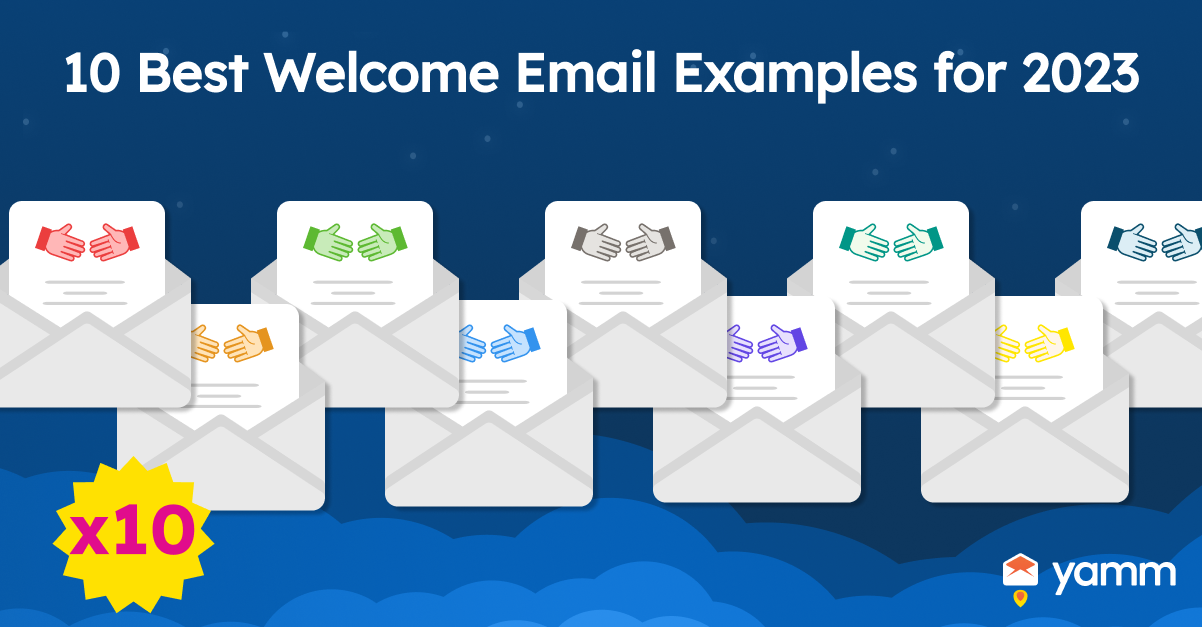
Crafting the perfect welcome email has become increasingly crucial in the highly competitive business landscape of 2023. Welcome email examples have become a valuable resource for brands seeking to create the best example of a welcome message.
A well-crafted welcome email helps establish trust and credibility, reassuring new customers that they have made the right decision in choosing the brand. It is the first point of contact between a company and its new customers or members, setting the tone for the entire customer journey.
New customers or subscribers feel disconnected from the brand without the best welcome emails, leading to lower engagement rates, reduced customer loyalty, and decreased conversions. Hence, creating the perfect example of a welcome message effectively communicating the brand's voice and personality is essential to building long-lasting and profitable relationships with new customers.
Below are the 10 Best Welcome Email Examples for 2023.
- Follow-up: A follow-up welcome email is a secondary email sent to a new subscriber or customer within a few days of the initial welcome email. It serves to continue engaging the new member and further establish a relationship with the brand.
- Personalization: Personalizing welcome emails involves tailoring the content of the email to the specific interests, preferences, and behaviors of the new subscriber or customer.
- Story Telling: Storytelling welcome emails involves using narrative techniques to engage the new subscriber or customer and create an emotional connection with the brand.
- Social Proof: Social proof welcome emails involve testimonials, reviews, or other forms of social proof to demonstrate the value and credibility of the brand to the new subscriber or customer.
- Brand Voice: Brand voice welcome emails involve using the same tone, language and style the brand uses in other forms of communication to create consistency and reinforce the brand's identity.
- Exclusive Content: Exclusive content welcome emails provide new subscribers or customers with unique and valuable information, resources, or offers not available elsewhere.
- Call to action: Call-to-action welcome emails involve using clear and compelling language to encourage new subscribers or customers to take a specific action, such as making a purchase, downloading an ebook, or following the brand on social media.
- Show appreciation: Showing appreciation for welcome emails involves expressing gratitude and recognition to new subscribers or customers for their interest in and engagement with the brand.
- Show value: Showing value for welcome emails involves demonstrating the benefits and unique value that the brand provides to new subscribers or customers.
1. Follow up
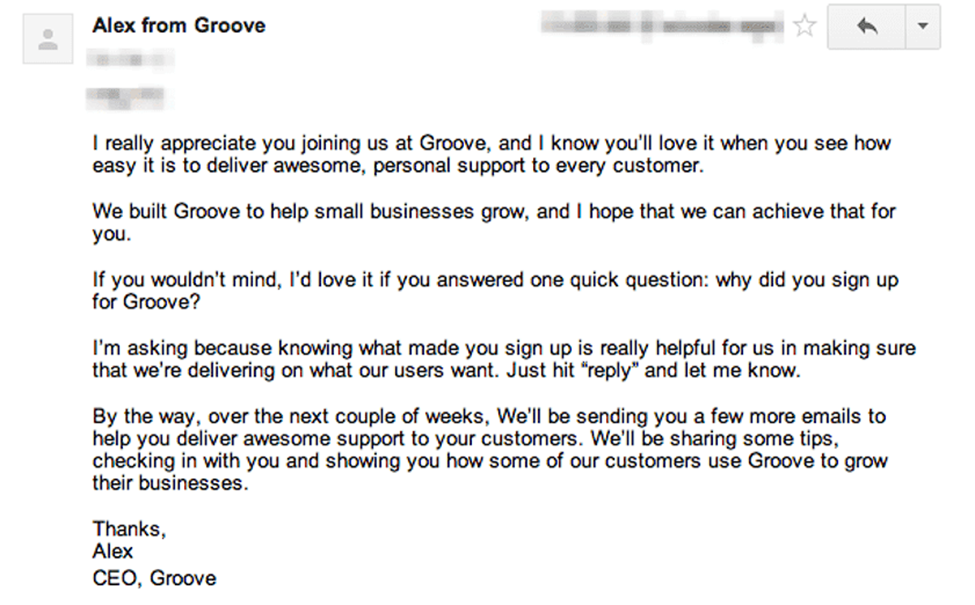
A follow-up welcome email is sent to new customers or members after they join a company's community or subscribe to a service. The email's purpose is to check in with the new member, ensure they are settling in comfortably, and provide additional information. It is a continuation of the welcome process and further engages new customers or company members.
Personalized support is offered to help customers become more engaged with the community, making the most of its offerings. The follow-up email increases customer engagement and loyalty, reduces churn, and demonstrates a commitment to customer satisfaction. It shows the new member that the organization values customer pleasure.
Follow-up welcome emails must be personalized and timely and provide pertinent information to avoid becoming spammy. Key points highlighted when discussing follow-up welcome emails include their ability to reinforce the positive first impression made by the initial welcome email, provide additional value to the new member, and increase engagement and conversions.
One important thing to keep in mind is the significance of personalization for follow-up welcome emails. Personalized subject lines increase the open rate by up to 26%. Follow-up welcome emails provide exclusive content or offer encouraging the recipient to engage further with the brand and generate revenue. Lastly, follow-up welcome emails serve as a means to gather feedback or information from the new member, which helps to improve the overall customer experience.
Several key points have to be highlighted in discussing follow-up welcome emails. One important aspect is that follow-up welcome emails reinforce the positive first impression made by the initial welcome email. Providing additional value to the new member, ultimately leading to increased engagement and conversions. It is important to note that personalization is crucial for follow-up welcome emails, with personalized subject lines leading to a 26% higher open rate. Additionally, follow-up welcome emails are used to provide exclusive content or offers that encourage the recipient to engage further with the brand and generate revenue. Lastly, follow-up welcome emails serve as a means to gather feedback or information from the new member, which helps to improve the overall customer experience.
Different types of follow-up welcome emails benefit from specific subject lines. The subject line "Get exclusive [content] as a new member is used for an exclusive content email." A limited-time offer email uses the subject line "Don't miss out on our limited-time offer for new members." A feedback request email uses the subject line "Help us improve! Share your feedback as a new member." The subject line "What's next as a new member of [Brand Name]?" is for a next-step email.
Welcome Emails offer several advantages to companies that use them. They help create a good first impression, setting the tone for future communication with the new member. Personalization and the inclusion of exclusive content or provide help increase engagement, loyalty, and revenue. Follow-up Welcome Emails engage the new member and increase the likelihood of future engagement and conversions. Companies improve customer satisfaction, increase revenue, and establish a stronger relationship with their audience by utilizing Welcome Emails. Companies improve customer satisfaction, increase revenue, and establish a stronger relationship with their audience.
Follow-up Welcome Emails have certain downsides. Poorly executed Follow-up Welcome Emails lead to low engagement and unsubscribes, defeating the purpose of the email. It is essential to ensure that Follow-up Welcome Emails are not overly promotional as it turns off new subscribers or customers. Follow-up Welcome Emails sometimes are repetitive or annoying when it is not tailored to the specific needs and interests of the new member. It is crucial to develop a thoughtful strategy for Follow-up Welcome Emails that balances the need to engage with new members while respecting their preferences and maintaining a positive relationship.
2. Personalization
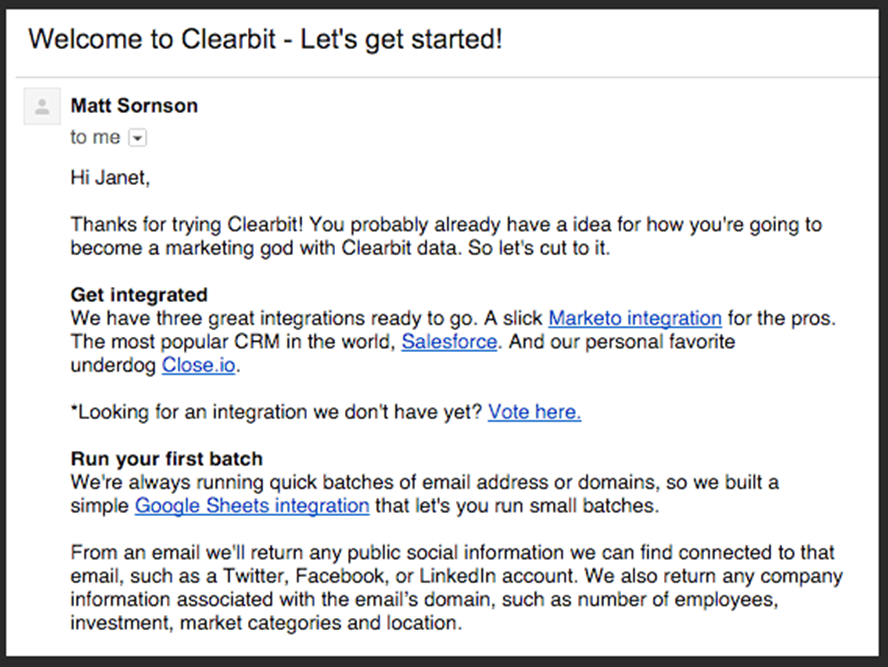
Personalization in Welcome Emails refers to the preparation of tailoring the content of the email to the specific receiver, using data such as their name, preferences, and behaviors. Personalized welcome emails help establish a deeper connection with the recipient, making them feel valued and understood. It leads to increased engagement, loyalty, and profit.
Personalization is important for Welcome Emails because it helps differentiate the email from generic promotional emails and create a positive first impression with the new subscriber or customer. Companies increase the likelihood of engagement, encourage repeat visits or purchases, and ultimately generate more revenue by tailoring the email to the individual recipient.
Personalization is a key aspect of Welcome Emails that involves tailoring the content of the email to the specific recipient using information about their preferences and behaviors. Personalized welcome emails help establish a deeper connection with the recipient, leading to increased engagement, loyalty, and revenue. Personalization differentiates welcome emails from generic promotional emails, making a positive first impression on the new subscriber or customer. Personalization is a powerful tool in email marketing that helps companies build stronger relationships with their customers and drive business growth.
Personalization is an essential aspect of welcome emails, and one effective way to achieve this is through customized subject lines. Using the recipient's name in the subject line is a simple yet effective way to establish a personal connection and make the recipient feel valued. The best subject lines for personalization are "Welcome, [Name]! Here's what you need to know" and show that the email is tailored specifically for the recipient.
Referencing the recipient's interests or preferences effectively grabs their attention and demonstrates that the email is relevant to their needs. Subject lines like "As a [Interest], you'll love these exclusive offers!" is helpful in the context.
Another approach to personalization is to use the recipient's location to offer relevant information about their local community, such as "Welcome to the [City] community! Here's what's happening near you."
Referencing past behaviors or purchases of the recipient demonstrates that the company understands their needs and preferences, leading to increased engagement and revenue. Using subject lines like "Based on your previous purchases, here are some recommendations for you" is effective.
Welcome emails effectively stand out from other promotional emails in the recipient's inbox and establish a positive first impression, ultimately leading to increased engagement, loyalty, and revenue, by utilizing these techniques in the subject line
Personalization in welcome emails offers several advantages. It makes the recipient feel valued and understood, which leads to increased engagement, loyalty, and revenue. Addressing the recipient by name or referencing their interests or location, the welcome email establishes a deeper connection with the recipient. Personalized welcome emails differentiate the email from generic promotional emails, making a positive first impression on the new subscriber or customer. Personalization encourages repeat visits or purchases, generating more revenue for the business. Personalization is a crucial element in welcome emails, and using it effectively brings several benefits to the business.
Personalization does have some disadvantages. It requires access to information about the recipient, which raises concerns about privacy. Inaccurate or poorly executed personalization does have the opposite effect and turns off the recipient. Personalization requires additional resources and effort to implement effectively. Personalization is a tremendous tool for building a strong connection with the receiver, boosting engagement, and boosting income despite these challenges.
3. Story Telling

Storytelling is an effective technique used to create more engaging and memorable welcome emails. Brands capture their attention and develop a stronger emotional connection by delivering a narrative that aligns with the recipient's interests, beliefs, or feelings.
Storytelling in welcome emails takes many forms. Some brands use personal anecdotes or testimonials from existing customers to illustrate the benefits of their product or service. Others use a narrative structure to guide the recipient through the brand's history, values, or mission.
The key to effective storytelling in welcome emails is to strike a balance between personalization and relevance. Brands need to aim to tell a story that resonates with the recipient's interests and needs while highlighting the unique value proposition of their brand.
Key points in storytelling welcome emails include personalization, brand messaging, and a clear call to action. Personalization is achieved by using the subscriber's name or location in the email. Brand messaging conveys the unique value proposition and personality of the brand. A clear call-to-action encourages subscribers to take the next step in engaging with the brand, such as visiting the website, following social media channels, or making a purchase.
The best subject lines for storytelling welcome emails depend on the brand and audience, it is supposed to be short, attention-grabbing, and relevant to the content of the email. Examples of best subject lines include "Welcome to the [Brand] Family!" and "Get Ready to Discover [Brand]."
Pros of using storytelling in welcome emails include increased engagement, brand loyalty, and conversion rates. Storytelling helps establish an emotional connection with subscribers, making them more likely to remember and engage with the brand in the future. Cons include a higher level of effort required to craft compelling narratives, and the risk of using storytelling is by being too promotional or dishonest.
4. Social Proof
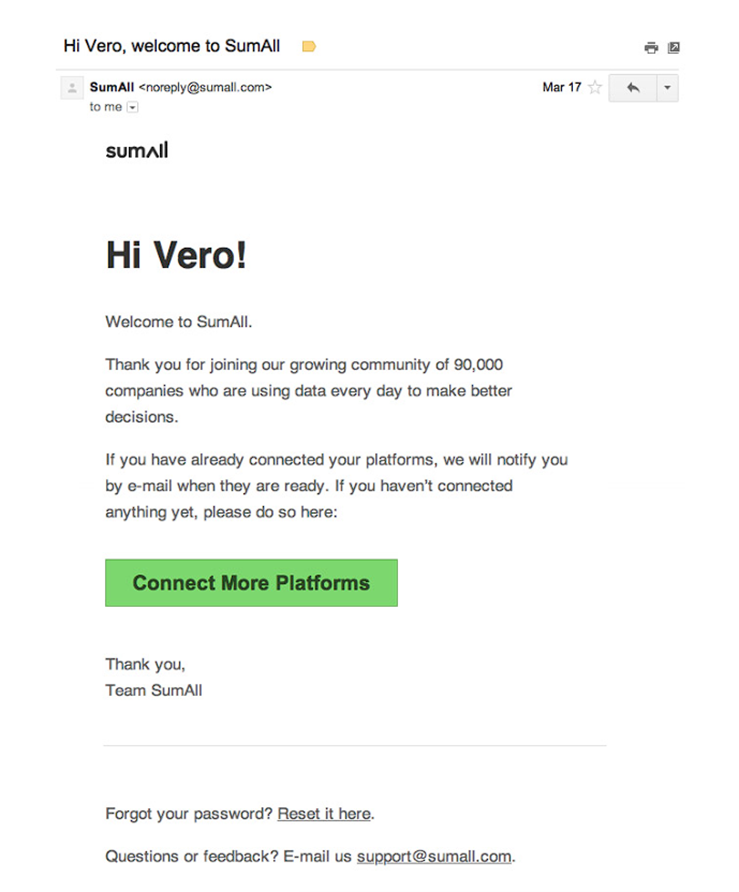
Social proof is a strong technique used to enhance the effectiveness of welcome emails. Social proof refers to the idea that people are likelier to take a certain action if they see others doing it. Social evidence in welcome emails includes client testimonials, ratings, reviews, or social media participation.
Social proof in welcome emails refers to using endorsements, reviews, or other methods of social validation to create trust with new subscribers or customers. Social proof is a powerful tool for convincing new subscribers to engage with a brand. Showing other people that had a good experience by purchasing the product or brand.
The importance of social proof in welcome emails lies in its ability to create a sense of credibility and trustworthiness for a brand. It helps alleviate any doubts or concerns that they have had about the brand when a new subscriber receives an email with positive reviews or testimonials from other customers. Social proof helps establish the brand as an authority in its industry and builds a community of loyal customers.
Social proof helps increase credibility, build trust and loyalty, and drive more engagement and revenue.
Key points to consider when using social proof in welcome emails include selecting the most relevant and compelling testimonials or reviews. Positioning them strategically within the email and ensuring they are authentic and trustworthy. Social proof is integrated seamlessly with the overall messaging and branding of the email rather than feeling like an afterthought or add-on.
The best subject lines for social proof welcome emails are concise and attention-grabbing, indicating the focus on social proof. The best subject line includes "See What Our Customers Are Saying About Us" and "Join the [Brand] Community of Happy Customers."
Pros of using social proof in welcome emails include increased trust and credibility, improved conversion rates, and the potential to build a loyal customer base. Social proof helps generate positive word-of-mouth marketing and increase a brand's overall visibility. Cons include the need to continuously collect and update testimonials or reviews and the risk of appearing disingenuous or manipulative if a social proof is not presented authentically.
5. Brand Voice
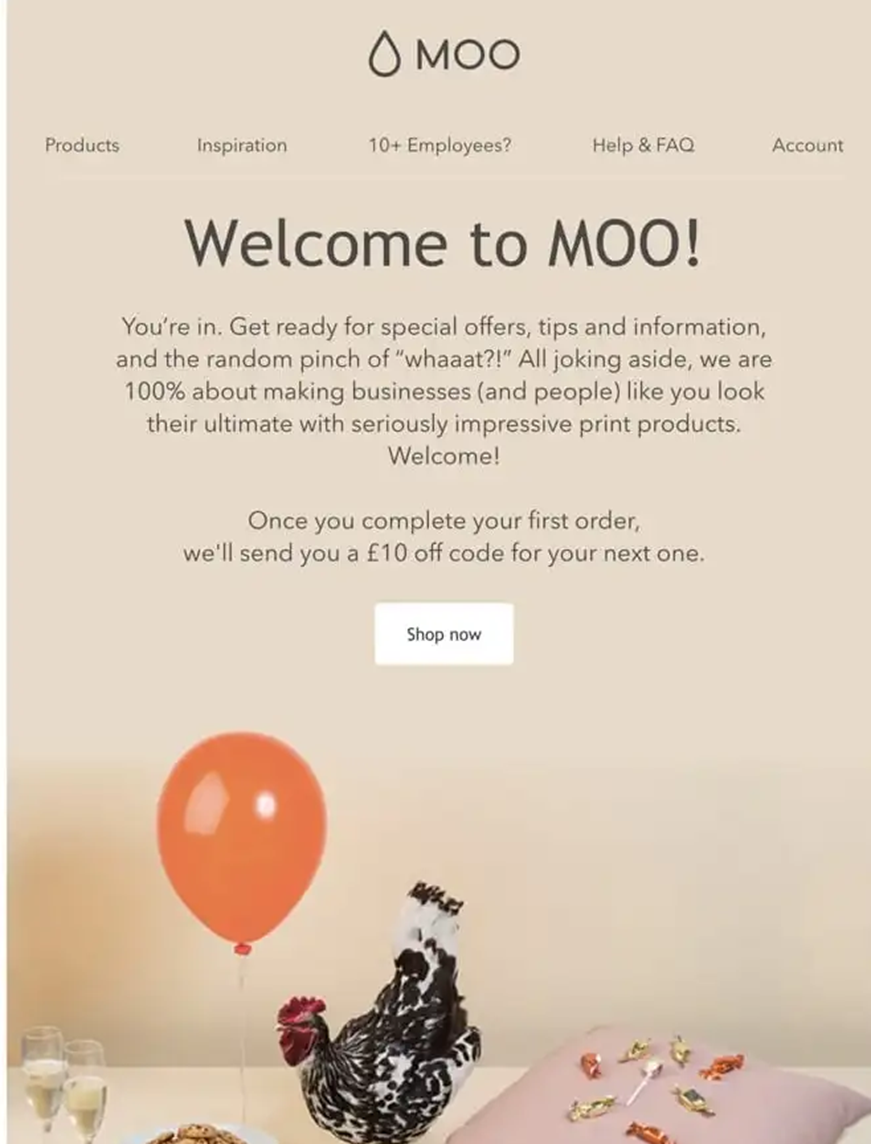
Brand voice is a critical feature of a welcome email, as it sets the tone and nature of the brand and supports making its style. Brand voice is the reliable and different personality, tone, and style a product uses in all of its communications, including its website, social media, and email marketing.
It's important to consider the brand voice and ensure the email is consistent with its overall personality and tone. The welcome email's language, tone, and visuals must reflect the brand's engaging and entertaining approach. The welcome email's language, tone, and visuals must represent the brand's engaging and amusing approach.
The importance of brand voice in welcome emails lies in its ability to create a memorable and distinctive initial impression with new subscribers. A very strong and steady brand voice helps establish a brand's identity, create trust and reliability, and distinguish it from other brands. A brand makes sense of familiarity and links with subscribers, making them more likely to engage with the brand further by using a consistent tone and language
Key points to consider when developing a brand voice for welcome emails include understanding the target audience and identifying the brand's unique personality and values. Aligning the voice with the overall messaging and branding of the email. A brand voice must be authentic and genuine rather than forced or artificial.
The finest lines used for brand voice welcome emails replicate the character and value of the brand, being noticeable and crucial to the information conveyed in the email. The best subject lines for brand voice welcome emails include "Welcome to [Brand], Let's Get to Know Each Other!" and "Join the [Brand] Community of Bold and Creative Thinkers."
Pros of using a consistent brand voice in welcome emails include increased brand recognition and loyalty and improved engagement and conversion rates. It has the potential to build a strong and authentic brand identity using brand voice. A brand creates a sense of trust and familiarity with customers by using a consistent voice across all channels of communication. Cons include the need to continuously monitor and update the brand voice to ensure it remains relevant and effective and the risk of alienating some customers if the voice is too niche or polarizing.
6. Exclusive Content
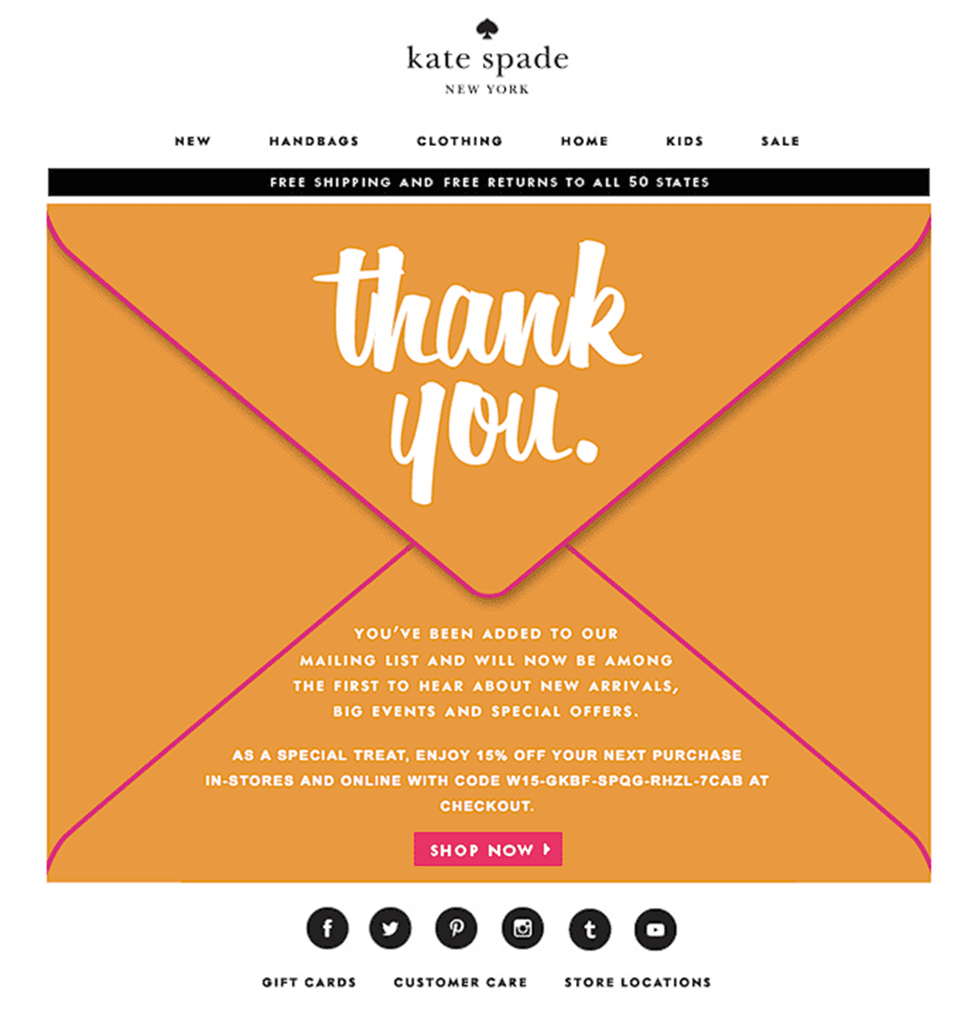
Exclusive content related to Welcome Emails refers to any unique and essential information or resources a company offers new subscribers or customers in their welcome email. The content is designed to create a positive first impression and establish a connection between the brand and the recipient. The importance of providing exclusive content in welcome emails lies in the fact that it helps the brand stand out in a crowded inbox. Providing added value to the recipient leads to increased engagement and loyalty.
The key point to consider is providing exclusive content in welcome emails, including identifying the resources or information most valuable to the recipients. Aligning the content with the brand's values and mission. The exclusive content is tailored to the recipient's interests and needs and is presented clearly and compellingly. It is important to keep in mind that exclusive content is not spammy but rather a genuine effort to provide value to the recipient.
The best subject line for an exclusive content-related welcome email includes phrases such as "Exclusive Access Just for You," "Here's a Little Something Extra," or "Welcome to [Brand Name], Here's Your Exclusive Offer." Subject lines have to be attention-grabbing, relevant to the content of the email, and reflect the brand's voice and personality.
The pros of providing exclusive content in welcome emails include increased engagement and loyalty. Improved customer satisfaction and increased brand awareness. Providing exclusive content helps establish a positive first impression with the recipient, which leads to increased sales and revenue over time. A potential con of providing exclusive content in welcome emails is that it requires additional resources
and effort to create and distribute it effectively.
7. Call to action
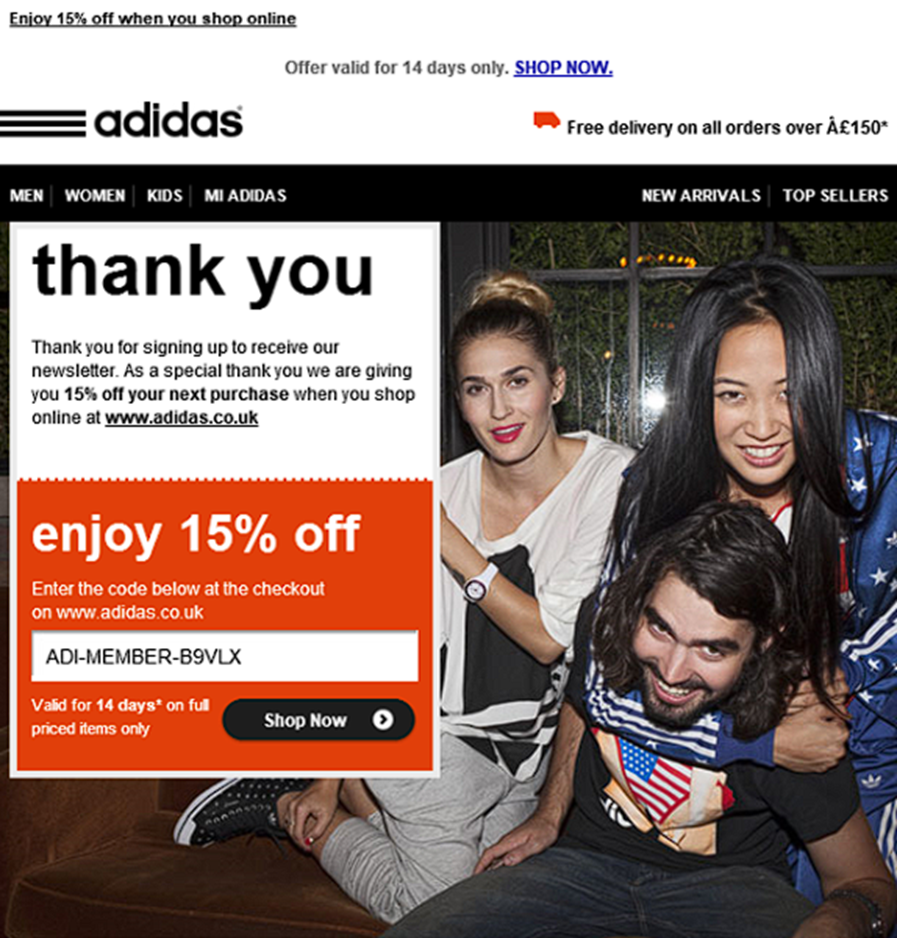
A call to action (CTA) related to Welcome Emails refers to a specific prompt or instruction that inspires the recipient to do a particular action. It is an important component of a brand's email marketing strategy. Designing to encourage the recipient to engage further with the brand and making a purchase or exploring extra content on the brand's website.
The importance of a CTA in a welcome email lies in its ability to drive engagement and conversions. A clear and compelling CTA encourages the recipient to take a specific action. Making a purchase or signing up for a newsletter leads to increased revenue for the brand. Additionally, CTAs in welcome emails help establish a positive first impression and build loyalty and trust with the recipient.
The key points to consider when creating a CTA for a welcome email include making the CTA clear and concise. Placing a prominent location within the email and ensuring that it aligns with the overall message and tone of the email. Personalizing the CTA by recommending items or services based on the recipient's past contacts with the brand is significant.
The best subject line for a CTA-related welcome email includes phrases such as "Get Started Today," "Explore Our Products," or "Claim Your Offer Now." The subject lines have to be attention-grabbing, relevant to the content of the email, and reflect the brand's voice and personality.
The pros of including a CTA in welcome emails include increased engagement and conversions, improved customer satisfaction, and increased brand awareness. CTAs in welcome emails help establish a positive first impression with the recipient, leading to increased sales and revenue over time. The potential con of including a CTA in welcome emails is that it comes across as too pushy, which turns off some recipients.
8. Show Appreciation
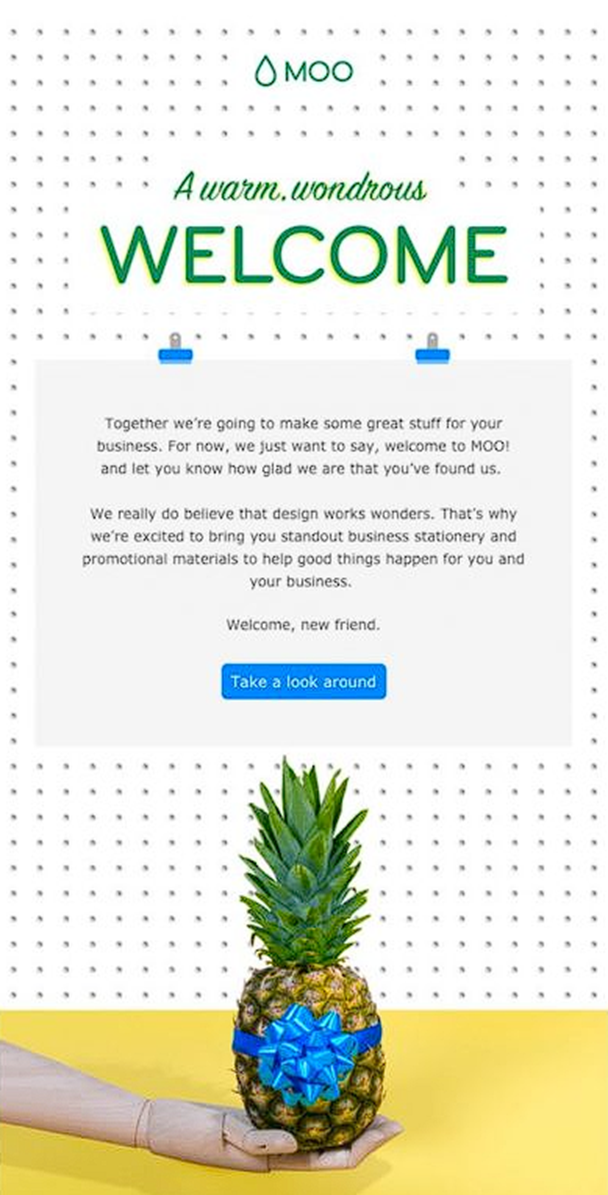
Showing appreciation related to welcome emails is showing thankfulness to new subscribers or customers for selecting to engage with the brand. An essential component of a brand's email marketing strategy is to make the recipient feel appreciated and welcomed, leading to increased engagement, loyalty, and conversions over time.
One way to show appreciation in welcome emails is to thank the recipient for their business or joining the brand's community. Another way is to offer a special discount, bonus, or exclusive content for signing up, purchasing, or joining a loyalty program. Personalizing the message to the recipient's interests or behavior demonstrates appreciation and makes them feel recognized and valued by the brand.
The importance of showing gratitude in welcome emails lies in its ability to establish a good first impression and build a sense of loyalty and trust with the recipient. Expressing gratitude helps the brand stand out and connect with the recipient, which boosts engagement, loyalty, and revenue over time.
Key points to consider in showing appreciation in welcome emails require sincerity, personalization, and brand voice and personality. Additionally, the message has to be concise and visually appealing, and any incentives or offers are expected to be straightforward to redeem.
The best subject lines for a welcome email that shows appreciation includes phrases such as "Thank You for Choosing [Brand]," "Welcome to Our Community," or "Enjoy a Special Offer for Joining [Brand]." These subject lines have to be attention-grabbing, relevant to the content of the email, and reflect the brand's voice and personality.
The pros of showing appreciation in welcome emails create a good first impression, foster loyalty, and trust, and boost engagement and conversions over time. However, a potential con is that it is difficult to personalize the message to every recipient, especially for larger email lists.
9. Offer Value
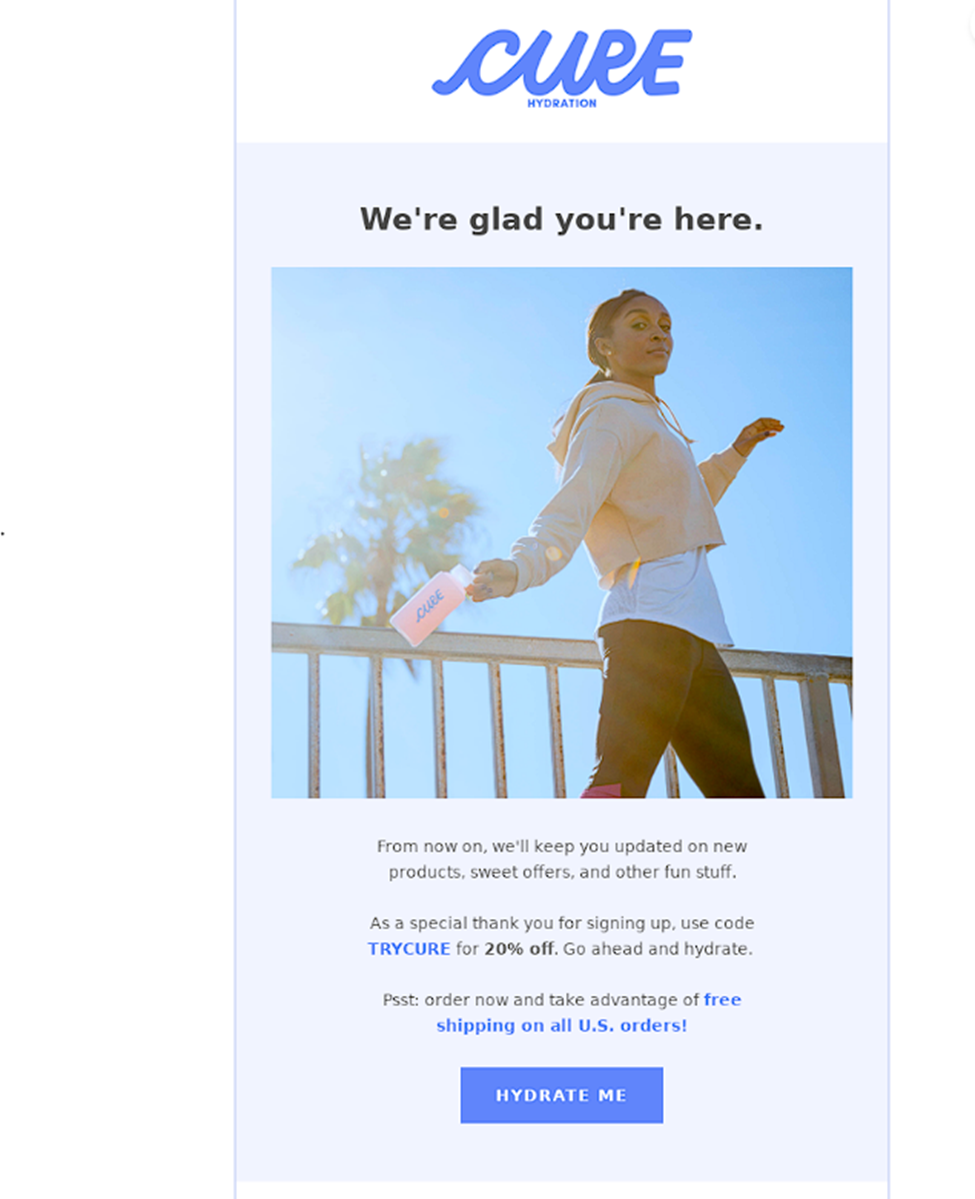
Offering value related to welcome emails refers to giving new subscribers or customers valuable information and resources in the first message they receive from the brand. It is an essential component of a brand's email marketing strategy, as it helps to establish a positive first impression, build trust, and encourage further engagement.
Offering value in welcome emails takes various forms, such as providing exclusive content, offering a discount, or coupon resources related to the brand's products or services. The key is to give something relevant and beneficial to the recipient that aligns with their interests or behavior.
The importance of offering value in welcome emails lies in their ability to establish a connection with the recipient and set the tone for future interactions. The brand demonstrates its expertise, builds trust, and encourages the recipient to engage further with the brand by providing value.
The key points to consider in offering value to welcome emails include personalizing the content to the recipient's interests or behavior and making the message visually appealing and easy to read. Additionally, the value offered has to be clear and easy to redeem, and any call-to-action is expected to be prominent and compelling.
The best subject lines for a welcome email that offers value include phrases such as "Get 20% Off Your First Purchase," "Unlock Exclusive Content as a New Subscriber," or "Discover Our Best Tips for [Interest or Behavior]." These subject lines are expected to be attention-grabbing, relevant to the content of the email, and reflect the brand's voice and personality.
The pros of offering value in welcome emails include establishing a positive first impression, building trust and credibility, and increasing engagement and conversions over time. However, a potential con is that it is challenging to personalize the content to every recipient, especially for larger email lists.
10. Highlight Benefits
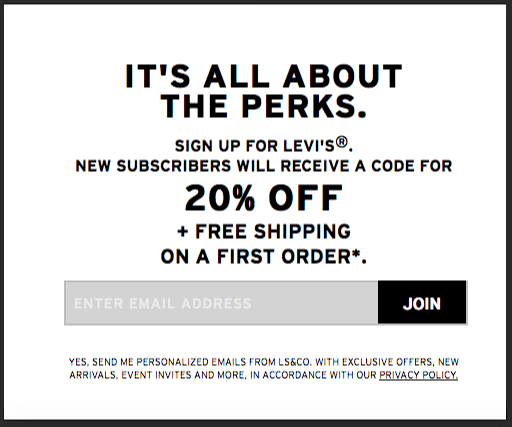
Highlighting helpful features highlighted in welcome emails refers to giving the advantages that new subscribers or customers expect by connecting with the brand. Creating a brand's value proposition and setting it separately from rivals is a very crucial part of the strategy.
Benefits are emphasized in welcome emails in a variety of ways, such as presenting details about the company's distinctive offerings, highlighting the caliber of its goods and services, or supplying social proof in the form of endorsements or reviews.
The importance of highlighting benefits in welcome emails lies in its ability to establish the brand's unique selling proposition and differentiate it from all competitors. The advantages of engaging with the brand, the brand attracts and maintains subscribers or customers, increases engagement, and ultimately drives revenue by communicating.
The key points to highlight benefits in welcome emails include customizing the content to the recipient's interests or behavior and matching the brand's voice and personality. Additionally, the benefits highlighted have to be clear and specific, and any call-to-action is expected to be relevant and compelling.
The best subject lines for a welcome email that offers value include phrases such as "Get 20% Off Your First Purchase," "Unlock Exclusive Content as a New Subscriber," or "Discover Our Best Tips for [Interest or Behavior]." These subject lines are expected to be attention-grabbing, relevant to the content of the email, and reflect the brand's voice and personality.
The pros of offering value in welcome emails include establishing a positive first impression, building trust and credibility, and increasing engagement and conversions over time. However, a potential con is that it is challenging to personalize the content to every recipient, especially for larger email lists.
What is a welcome email?
A welcome email is the first message a new reader or purchaser receives from a brand after signing up for a newsletter, creating an account, or making a purchase. The purpose of a welcome email is to present the receiver to the brand, set prospects for future communication, and deliver value that encourages the recipient to engage with the brand further. Welcome email examples show how an effective welcome email leads to increased engagement and loyalty with a brand.
The importance of welcome emails is supported by evidence from numerous studies and advertising experts. Experian found that the average open rate for commercial emails is 14.8%, while welcome emails had an open rate of 58.7%. Additionally, welcome emails have a transaction rate that is 336% higher than promotional emails, making them an effective tool for driving conversions and revenue.
Marketing experts emphasize the importance of welcome emails in building brand loyalty and engagement. A well-crafted welcome email that provides value and personalized content creates a positive first impression for the recipient. It leads to increased brand affinity and customer loyalty over time. A study by MarketingSherpa found that welcome emails that provide exclusive offers or content have an average conversion rate of 29%, compared to 5% for promotional emails.
Overall, welcome emails set the tone for future communication and boost conversions and revenue. Welcome emails provide a good first impression on new subscribers or customers by offering value and unique information and increasing brand affiliation and patronage.
Why are Welcome Emails important in Email Marketing?
A welcome email is important in email marketing because it serves as the first point of contact between a brand and a new subscriber or customer. Welcome email examples are a big help for the company, giving them a guide for making one. Welcome email provides an opportunity to make a positive first impression, establish a relationship with the recipient, and set expectations for future communication.
Research shows that welcome emails effectively engage subscribers and drive conversions. Welcome emails in email marketing provide an opportunity for brands to personalize their communication with the recipient, which leads to increased engagement and loyalty. Welcome emails earn 320% more money per email than promotional emails, according to a Campaign Monitor analysis. It highlights the importance of the welcome email as a revenue-generating tool.
Additionally, welcome emails provide valuable content or offers that encourage the recipient to engage further with the brand. A study by Return Path found that welcome emails containing offers had a click-through rate that was 14.4% greater than those that didn't.
Why do you need to write a Welcome Email?
It is needed to write a welcome email to create a good connection with a new subscriber or customer. Set expectations for upcoming communication, and deliver value that encourages them to engage with the product further. Writing a welcome email gives a chance to personalize communication with the receiver, which increases engagement and loyalty.
A welcome email encourages the recipient to engage further with the brand by providing value in the form of exclusive content or offers. Writing a well-crafted welcome email is important for creating a positive relationship. Especially for new subscribers or customers, increasing engagement, and driving conversions and revenue. It is a wise move for establishing a strong foundation for future communication with the brand.
Is writing a Welcome Email a good Email Marketing Strategy?
Yes, writing a welcome email is an extremely impactful email marketing strategy supported by welcome email examples. Studies have been found to generate higher engagement levels, in terms of both email open rates and click-through rates, compared to other promotional emails. Creating a welcome email is an effective email marketing strategy for several reasons. It sets the tone for future interactions with the subscribers or customers and is an opportunity to showcase the brand's voice and personality. Welcome emails are an effective way to engage the subscribers or customers and encourage them to interact with the brand, exemplified by welcome email examples. It increases their loyalty to the brand and improves their overall experience.
Welcome emails are an opportunity to drive conversions by providing a clear call to action. Sending a welcome email signal to email providers that the emails are wanted and legitimate improves the deliverability and the sender's reputation. Writing a welcome email is a highly effective email marketing strategy that helps make a great first impression, build engagement and loyalty, drive conversions, and improve the deliverability and sender reputation. Brands create a welcome email that effectively showcases their brand personality and provides value by looking at welcome email examples of subscribers or customers.
Whom should the Welcome Email be addressed to?
The Welcome Email for New Subscribers is going to be addressed to the individual who has recently subscribed to the company's mailing list or newsletter.
A welcome email is a standard marketing practice because it helps establish a personal connection with the new subscriber. It sets the tone for a positive relationship between the subscriber and the company.
Additionally, using the subscriber's first name in the greeting of the Welcome Email has been shown to increase open rates and engagement levels. It is seen as more respectful and personalized than a generic greeting such as "Dear Subscriber."
Using an individual's full name in a Welcome Email helps to establish a personal connection with the new customer. Research has shown that personalization is critical to subscriber engagement and retention.
The Welcome Email for New Subscribers includes a brief introduction to the company, its mission, and its values. It highlights the benefits of being a subscriber, such as receiving exclusive content or being the first to know about promotions and events.
The Welcome Email must provide clear instructions on how to manage email preferences and how to unsubscribe for the subscriber who no longer wishes to receive emails from the company.
When should you send a Welcome Emails?
The Welcome Email is going to be sent after the individual has joined the organization or subscribed to the company's mailing list.
The Welcome Email serves as the first point of contact between the brand and the new member. It sets the tone for future communication. The company expresses its thanks for the individual's interest and participation by delivering the Welcome Email as soon as possible.
Furthermore, sending the Welcome Email promptly helps to increase engagement and reduce the likelihood of the individual forgetting about their subscription or interest in the brand. Research by Experian found that welcome emails sent right away after sign-up had an average open rate of 57.8%, compared to welcome emails sent an hour or later, which have a 39.9% average open rate.
Sending the Welcome Email promptly helps to establish a positive first impression and build trust with the new member by demonstrating that the brand is reliable and attentive to the needs of its members. The Welcome Email helps to foster a strong and lasting relationship between the brand and the member.
What are the benefits of sending Welcome Emails?
Listed below are the benefits of sending Welcome Emails.
- Establishes a Positive First Impression: The Welcome Email is the first point of contact between the brand and the new subscriber. The brand establishes a positive first impression and sets the tone for future communication. First impressions build trust and loyalty with the new member and increase the likelihood of future engagement and conversions.
- Increases Engagement and Loyalty: Welcome Emails provide an opportunity for brands to personalize their communication with the recipient. By tailoring the content of the Welcome Email to the recipient's interests and needs, the brand increases engagement and loyalty. Experian's research indicates that welcome emails have a 57.8% open rate, much higher than the 14.8% average for promotional emails. The information highlights the effectiveness of Welcome Emails in engaging subscribers and customers.
- Drives Conversions and Revenue: Welcome Emails provide valuable content or offers that encourage the recipient to engage with the brand. According to a study by Campaign Monitor, Welcome Emails generate 320% more revenue per email than promotional emails. The data highlights the importance of the Welcome Email as a revenue-generating tool for brands.
Is it hard to create a Welcome Email?
No, creating a Welcome Email is not necessarily hard. However, it requires thought and planning to ensure the email successfully engages and welcomes the new subscriber or customer.
Companies must evaluate the interests and needs of their audience in order to create an engaging and effective Welcome Email. The content of the email must then be tailored to fit those interests and demands. Some templates and samples are available online that help brands create effective Welcome Emails.
A study by Experian found that welcome emails with customized subject lines have a 26% greater open rate than those with generic subject lines. The data demonstrates the value of personalizing welcome emails. Personalization, visual appeal, and a clear call to action are all important factors to consider when learning to write a Welcome Email.
Can Welcome Email be used in all Types of Emails?
No, welcome emails cannot be used in all types of emails. Welcome emails serve the unique purpose of initiating a connection with a new subscriber or customer and establishing the tone for upcoming communication. Various email types, such as newsletters or promotional emails, have distinct objectives and require diverse approaches.
Promotional email is among the types of emails. It is intended to endorse a product or service and inspire recipients to purchase. Their content, tone, and call-to-action are made to the objective and differ from those of welcome emails. Similarly, transactional emails, such as order confirmations or shipping notifications, provide specific transaction-related information and do not require a welcome email's personalization or value proposition.